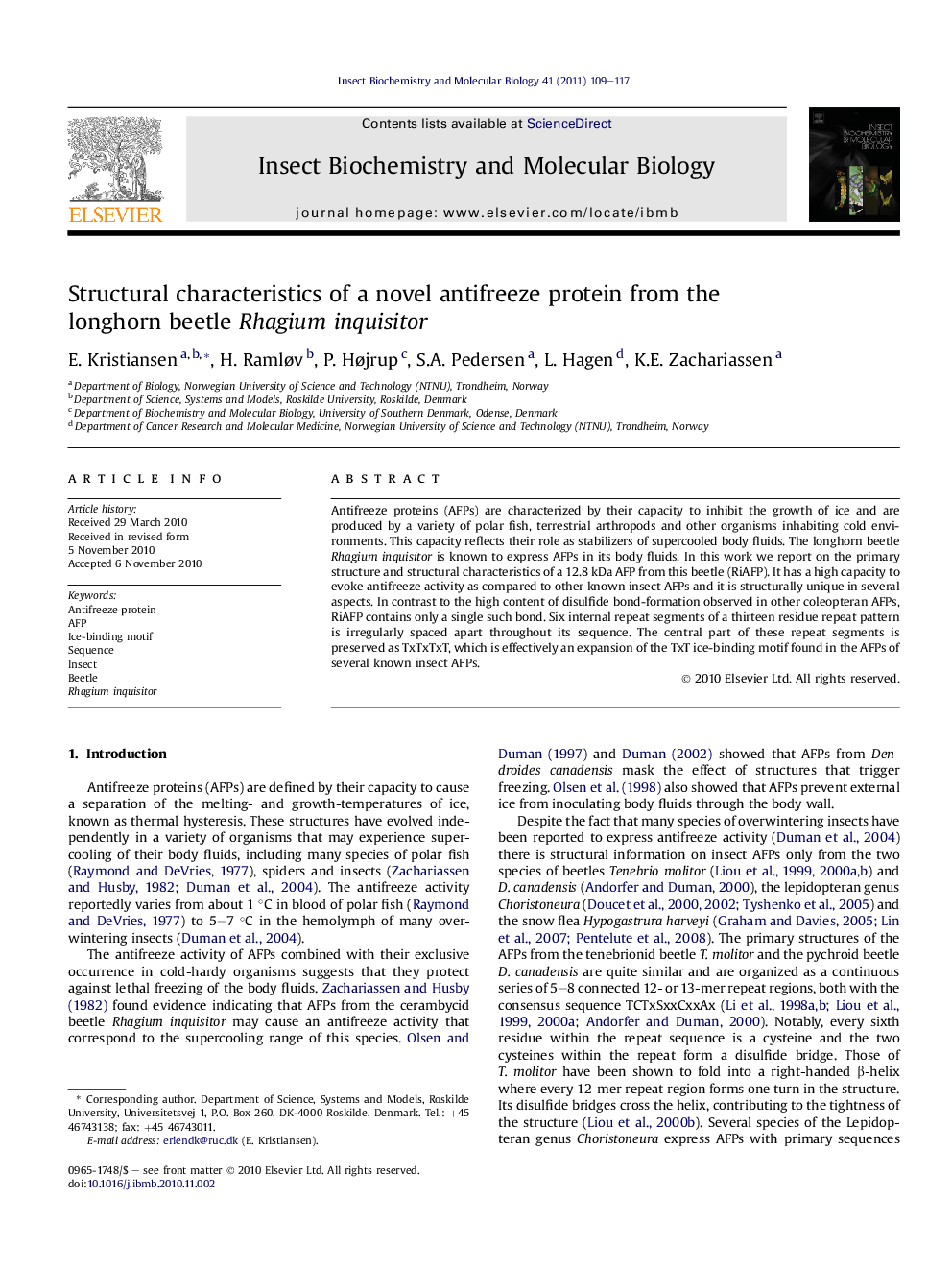| Article ID | Journal | Published Year | Pages | File Type |
|---|---|---|---|---|
| 1982433 | Insect Biochemistry and Molecular Biology | 2011 | 9 Pages |
Antifreeze proteins (AFPs) are characterized by their capacity to inhibit the growth of ice and are produced by a variety of polar fish, terrestrial arthropods and other organisms inhabiting cold environments. This capacity reflects their role as stabilizers of supercooled body fluids. The longhorn beetle Rhagium inquisitor is known to express AFPs in its body fluids. In this work we report on the primary structure and structural characteristics of a 12.8 kDa AFP from this beetle (RiAFP). It has a high capacity to evoke antifreeze activity as compared to other known insect AFPs and it is structurally unique in several aspects. In contrast to the high content of disulfide bond-formation observed in other coleopteran AFPs, RiAFP contains only a single such bond. Six internal repeat segments of a thirteen residue repeat pattern is irregularly spaced apart throughout its sequence. The central part of these repeat segments is preserved as TxTxTxT, which is effectively an expansion of the TxT ice-binding motif found in the AFPs of several known insect AFPs.
Graphical abstractFigure optionsDownload full-size imageDownload high-quality image (104 K)Download as PowerPoint slideResearch highlights► First antifreeze protein reported from the coleopteran superfamily Chrysomeloidea. ► Highly active antifreeze protein with single disulfide bond. ► Internal repeat regions contain expanded TxTxTxT ice-binding motifs. ► Repeat regions irregularly spaced apart by non-repeat regions.
